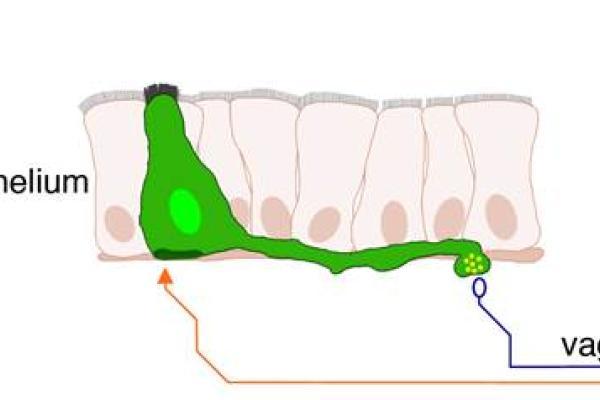
Mother Teresa said, “You can do what I cannot do. I can do what you cannot do. Together we can do great things.” Xiling Shen, Ph.D., associate professor of biomedical engineering and Center for Genomic and Computational Biology (GCB) member, has taken this sentiment to heart on his new project, Human Cell Atlas Along the Gut-Brain Axis. He received $400,000 from the Chan Zuckerberg Initiative (CZI) to become a part of CZI’s Seed Networks for the Human Cell Atlas, along with 37 other collaborative science teams.
These projects are a part of CZI’s support for the global initiative to build a Human Cell Atlas (HCA) in 2018. The goal of the HCA is to create a collection of maps that will describe how cell types in the body work together to form tissues, create knowledge of how all body systems are connected, and provide insights into how changes in our cells underlie health and disease. Participants in the CZI Seed Networks will meet at a kickoff event on July 29 to work towards building a whole human single cell map.
Through a collaboration with Ken Lau, Ph.D., at Vanderbilt University, Shen’s network will build a human cell atlas along the gut-brain axis by isolating and profiling enteroendocrine cells (EECs) and vagal nodose ganglion using single cell RNA-seq and ATAC-seq. EECs are specialized cells found within the gastrointestinal tract that sense environmental signals like nutrients, bacteria and movements and relay those signals to the vagal nodose ganglia, or neurons that compute and control signaling between the brain and all other organs. Through this research, Shen hopes to better understand this gut-brain axis in humans at an unprecedented single-cell resolution.
Shen will partner with Deb Sudan, M.D., chief of abdominal surgery in the Duke Transplant Center, to perform this research. This interdisciplinary collaboration between engineers and surgeons gives them the unique capability to characterize EECs and vagal nodose ganglion from six organ donors almost immediately after expiration to ensure the cells are still alive. This is the first time this type of research has been done, thanks to Duke’s unique environment where engineers and surgeons can work together seamlessly.
Scientists know that a signal is sent from the gut and travels through the axons up to the brain, but the rest remains unclear. “We know that things are going on between the gut and the brain,” Shen said. “But we have no idea how the signal between them is sent, what kind of signal is being sent, or what information the gut sends to the brain and vice versa.”
Shen and his team will perform single cell RNA-seq and ATAC-seq on the EECs and vagal nodose ganglia they’ve harvested. Single cell RNA-seq will make it possible for them to accurately profile the thousands of cells in the vagal nodose ganglia so they can learn what each cell does and what kind of state the cells are in. ATAC-seq will allow them to look at the epigenetic footprint of each cell and discern distinct types.
“Studying the gut-brain axis is exciting,” said Shen. “It will give us a sort of code to decipher what signal is getting sent and how it is processed, which will allow us to see things from a translational angle.” This could open up opportunities for new drug development, improved neuromodulation strategies and more treatment options for brain-related illnesses. Currently, these treatments are limited because the brain is so difficult to access. The few drugs that make it past production don’t have high success rates due to the hard-to-penetrate blood-brain barrier, and neuromodulations are a hit or miss. But with this research, treatment could become a lot more precise.
Shen and his team hope that by learning more about the gut-brain axis, they can use it as a conduit to trick the brain. “Right now, we don’t know how to control the gut-brain axis,” he said, “but if we can figure that out, we can make drugs that will get past the blood-brain barrier, use microbiota to stimulate the brain through the gut, know which neurons in the brain to modulate, and more.”